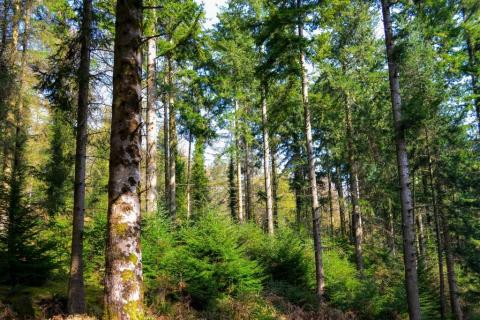Hybrid Event hosted at University of Nottingham
Register HERE
Woodland creation has never been more important.
We need more woodland for people to enjoy, for nature, to sustain our timber security and to help reduce the impact of climate change. We need more trees in urban areas for health, well-being and environmental benefits. However the simple act of planting or establishing a tree is not quite so simple as it first appears! What is the right tree for the right site? What are evidenced-based scientific, technical and social challenges and barriers to success?
Underpinning these activities is the need for knowledge of tree biology and ecology, irrespective whether trees are established in urban, rural or wild landscapes. Creating canopy is not just about planting trees as new nature-based solutions are emerging that help us create new tree and woodland habitats through natural colonisation and regeneration. At the present time we are not establishing enough tree and woodland canopy to meeting targets for NetZero emissions and there is uncertainty about the form and structure of tree and woodland canopy cover into the future. Science and technology play a vital role in establishing trees and woodlands.
This event has two phases. Firstly a two-day conference will shine a light on new and emerging priorities, latest research and technical advances related to creating canopy. Secondly on day 3 we will host a workshop of the nascent FraxNet network, a collaborative network of researchers across Europe and North America who are reviving ash populations from ash dieback and emerald ash borer as well as other pests and diseases of European ash. Delegates are invited to join for two or three days, either in-person or virtually.
Major Themes in 'Creating Canopies'
· Urban Canopies - merging engineering with nature solutions?
· Natural processes – colonisation and natural regeneration to increase taxonomic and functional diversity
· What grows with what? Tree and woodland establishment in agroforestry systems
· Planting new productive woodlands - biology, genetics and ecology
· A climate of change – genotype and species choices for the future
Preliminary Schedule
We are delighted to launch the preliminary program for the Creating Canopies and FraxNet meeting.
Download Preliminary Schedule (PDF): October 5th
Abstract Submission
We encourage submission of abstracts for delegates to present their work linked to any aspect of tree-planting.
We encourage submission of abstracts for poster presentations. These delegates will be invited to provide a short talk and poster presentation.
Abstract Submission for poster presentations closes October 15th 2023





